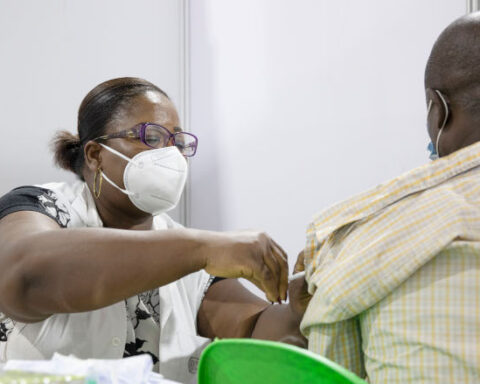The speed with which doctors and scientists were able to reach this stage is unprecedented, but the race isn’t over. Now comes the incredible challenge of rolling it out.
Earlier this year, Dr Rochelle Walensky, President-elect Joe Biden’s pick to head the Centers for Disease Control and Prevention (CDC), ran a mathematical model to form a better understanding of how a coronavirus vaccine might impact the ongoing pandemic. The study found that the most important factor in a vaccine’s success is not necessarily how well it works. It’s everything else: how quickly and strategically the vaccine is distributed across the country, how well received it is, and whether people continue to wear masks and maintain physical distancing as the rollout progresses.
Dr. Walensky and the co-authors of the research article in Health Affairs claim another critical component to success is “companion, culturally-sensitive and evidence-based communication to promote vaccine acceptance and convey the continued need for other prevention practices even after a vaccine becomes available.”

The Vaccines Were Developed with Record Speed. Now, How Will the Healthcare Industry Propel Their Distribution?
The line to get the vaccine is millions deep, according to the New York Times tracker, leaving plenty of time for angst and uncertainty as everyone waits their turn—assuming they’re even willing to receive it. After months of quarantining and social distancing, pandemic fatigue is afflicting many, which makes the need for evidence-based medical communication paramount. That’s what pharmacies, medical practices, and public health associations are focusing on in order to accelerate the vaccine’s distribution.
The Healthcare Industry’s Early Advertising Efforts for the COVID-19 Vaccine
According to CNN, the Department of Health and Human Services launched a national ad campaign in December “promoting awareness about the forthcoming coronavirus vaccines with a modest $150,000 ad buy on YouTube.” They plan to invest as much as $250 million more in the coming months. The goal of the campaign is to help “prepare the nation for the vaccine when it is available for public distribution through the states,” according to an administration official.
Like the Department of Health and Human Services, media partners are actively doing what they can to help during this crisis. The Advertising Council, for instance, started contributing with its #MaskUpAmerica campaign, and is now working hard to convince people that that a coronavirus vaccine is safe.
NPR’s All Things Considered reports that the Ad Council’s projected $50 million vaccine campaign will be the most significant in the group’s history. “Widespread adoption of the COVID-19 vaccine is our generation’s ‘moonshot’ and will represent one of the largest public health interventions in our nation’s history,” said Lisa Sherman, Ad Council President and CEO. “By bringing together the worlds of communications, public health and policy, we can transform life as we know it today and save hundreds of thousands of lives.”
How Can Healthcare Advertisers Propel the Distribution of the Vaccine?
As seen in the recent election, a hands-on effort is the foundation to winning hearts and minds. Understanding who you are targeting is a critical first step in any communication campaign. Equally important is multi-channel ad across OOH, social, and magazines, including interactive elements such as AR for people to scan to learn more, and coordinated at the national and local level with consistent and in-real-time messaging.
Inform and Empower
- Remember the characteristics of effective vaccine and health-related communications: empathy, caring, and authenticity. Highlighting shared values and tailoring messages to the targeted audience’s specific concerns and needs is often essential for building trust, and for communication to succeed.
- Use websites and social media platforms proactively and positively. Leverage social media analytics to evaluate social media content’s impact. Employ search to drive engagement. Empower users to share and take ownership of information through their social media profiles. Urge them to start a dialogue; respond to questions and concerns in real time.
- Place strong CTAs for the vaccine—users need to understand that the vaccine is for the good of public safety and health.
Why Advertisers Need to Harness the Power of Programmatic Ads for the COVID-19 Vaccine
Knowing what you want to say, and to whom you want to say it, are excellent starting places. Tailoring messaging to segments will make it resonate that much more. Brands and providers must be consistent and direct. Including a call-to-action (CTA) to learn more can increase adoption. Pushing messaging across every platform—television, streaming, magazines, search, OTT, emails, and so on will reinforce key messaging.
When doing this, be mindful that the creative that should work best will be adapted to provide insights specifically relevant to the target. Be sensitive the fact that the concerns of one demographic may differ from another. Convincing high-risk elderly populations is an altogether different task from persuading college students, and perceptions of vaccination vary among racial and ethnic groups.
Polls show that Black Americans are likely to be the most hesitant to get a vaccine once one becomes available, and their skepticism is rising fast. In one September survey, only 32% of Black adults said they would get a vaccine, down from 54% in May.
To drive messaging home, coordinate campaign outreach with community-based organizations like hospitals and local distribution centers—including pharmacies, urgent care centers, faith-based institutions, and television stations—to build a foundation and trust and awareness with target audiences.
I’m a New Yorker, which means I ride subways (or used to), and subways sometimes, inexplicably, stop. When they do, the wait seems interminable. A fellow straphanger once muttered during a delay, that if the conductor would make an announcement about why, and roughly how long it will be before moving again, it would be less stressful. It’s up to health officials and wellness centers to maintain open and transparent lines of communications with the public, and then we’ll get to where we want to be—together.






